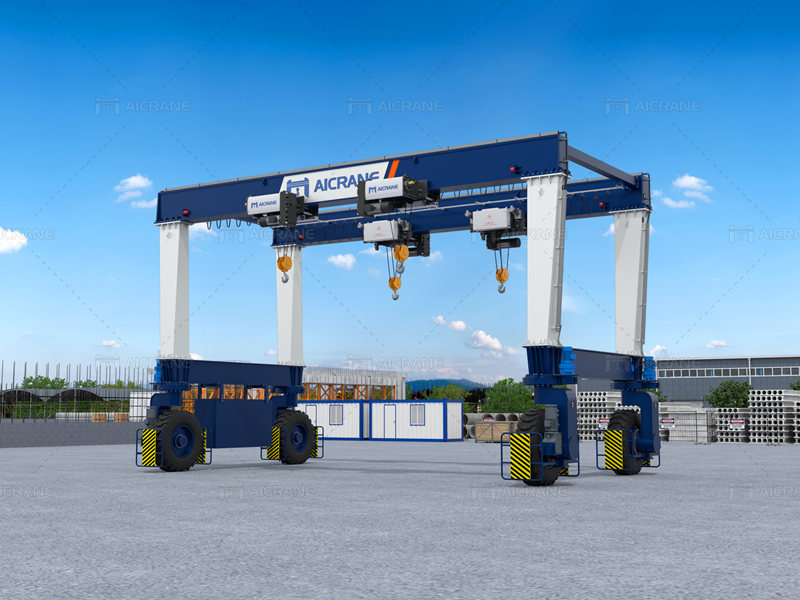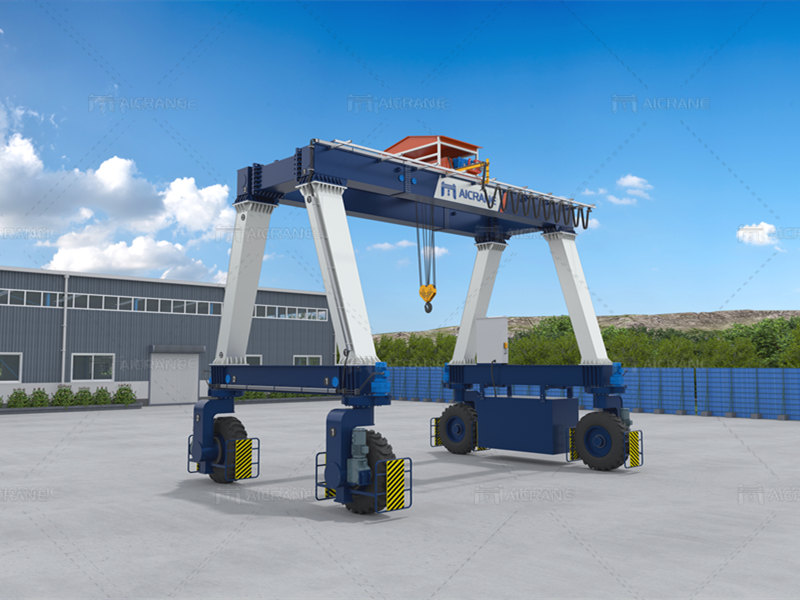When considering the purchase of a rubber tyred gantry crane (RTG crane), one of the most important aspects is the price. Rubber tyred gantry cranes are widely used in container handling operations, particularly in ports and terminals, where they are valued for their mobility, efficiency, and ability to handle heavy loads. However, the rubber tyred gantry crane price can vary significantly based on a range of factors. As a buyer or business owner looking to invest in such equipment, it’s important to understand the elements that influence the pricing so you can make informed decisions and potentially control or reduce costs. Here are the key factors that influence rubber tyred gantry crane price and the ways you can manage or control them to ensure you get the best value for your money.

Capacity and Size of the Crane
The capacity of a rubber tyred gantry crane is a crucial factor in determining its price. Generally, the higher the lifting capacity, the higher the price of the crane. For instance, smaller cranes with a lifting capacity of around 10 to 20 tons may cost significantly less than large 50 ton gantry cranes capable of lifting 50 tons or more.
How to Control This Factor:
Assess Your Requirements: Before purchasing, assess the exact lifting capacity you need for your operations. If you are dealing with standard container sizes and weights, a medium-capacity RTG crane may suffice. By avoiding purchasing a crane with excessive capacity, you can save significantly on the overall price.
Consult with Experts: Reach out to gantry crane manufacturers or distributors to determine whether a lower capacity RTG crane can meet your needs, and avoid over-specifying your crane, which could lead to unnecessary costs.
Customizations: If you’re looking to customize the crane, make sure that additional features are essential to your operation. Unnecessary customizations will increase the base price, so focus on only those that directly impact efficiency and functionality.
Brand and Manufacturer
The brand and manufacturer of the rubber tyred gantry crane play a significant role in its pricing. Established manufacturers with a proven reputation for quality and reliability, such as Konecranes, Liebherr, and ZPMC, typically charge more for their products due to their experience, expertise, and the quality of the cranes they produce. On the other hand, lesser-known manufacturers may offer lower prices but might lack the same level of support, parts availability, or overall quality.
How to Control This Factor:
Research Different Manufacturers: It’s important to thoroughly research various manufacturers to understand their pricing structure and the features they offer. While well-known brands may offer more advanced features and reliability, emerging or lesser-known manufacturers may be able to provide more affordable options without compromising on quality.
Consider Local vs. International Manufacturers: Local manufacturers like Aicrane or distributors may offer more competitive prices due to lower shipping and import duties. However, this may also mean fewer options for highly specialized cranes. Balancing your needs and considering the long-term reliability of the equipment is key.
Request Multiple Quotes: Get quotes from multiple manufacturers or suppliers to compare prices and features. By negotiating with several suppliers, you increase your chances of securing the best deal.
Technological Features and Automation
The level of technology and automation integrated into the rubber tyred gantry crane can greatly affect the price. Cranes equipped with advanced features, such as remote control, automated stacking, precise load control, or energy-efficient systems, are typically more expensive than manual or basic models.
How to Control This Factor:
Identify Your Needs: Consider which technological features are necessary for your operations and which are optional. For example, if you don’t need advanced automation or remote operation, opting for a less automated model can significantly lower the price.
Consider Future Growth: While opting for basic models may reduce initial costs, investing in technology now may save on labor and operational costs in the long run. Weigh the long-term benefits of automation versus the upfront costs to make an informed decision.
Negotiate for Specific Features: If certain features are a must, negotiate with manufacturers to customize the crane based on your needs, ensuring you only pay for the technology that will actually improve your operations.

Materials and Construction Quality
The materials used in constructing the rubber tyred gantry crane, including the steel used for the frame and the wheels, also play a significant role in the final price. Higher-quality materials that offer better durability and longevity come at a premium.
How to Control This Factor:
Choose the Right Material Grade: Discuss the material options with manufacturers and determine if premium materials are necessary for your specific use case. While higher-grade materials provide durability and longer life, they can also increase the upfront cost. If your operations don’t require heavy-duty materials, you may be able to select a more cost-effective option.
Consider Maintenance Costs: Lower-quality materials might reduce the initial price but may increase maintenance and repair costs in the future. Ensure you strike a balance between quality materials and ongoing operational costs.
Delivery and Shipping Costs
Delivery and shipping costs can significantly affect the final price of the rubber tyred gantry crane. International shipments, especially for large cranes, can be expensive due to transport logistics, customs duties, and other fees.
How to Control This Factor:
Local Suppliers: If possible, purchase from local suppliers or manufacturers to avoid the high costs of shipping from overseas.
Negotiate Shipping Terms: Some manufacturers include shipping costs in the total price, while others offer a separate quote for delivery. Negotiate shipping terms to get the best deal, especially for international shipments.
Consolidated Shipping: If you’re purchasing more than one crane or other equipment, inquire about consolidated shipping to reduce overall transport costs.
After-Sales Service and Warranty
The level of after-sales service, warranty, and spare parts availability is another factor that affects the rubber tyred gantry crane price. Manufacturers who offer comprehensive warranties, regular maintenance services, and readily available spare parts tend to price their products higher.
How to Control This Factor:
Evaluate Service Packages: When comparing prices, evaluate what after-sales services are included in the deal. Some manufacturers provide extensive service packages with annual maintenance and a warranty period, while others may charge separately for these services.
Negotiate Warranties: You may be able to negotiate better warranty terms or even extended warranties, which could save you money in the long run by reducing maintenance and repair costs.
Consider Long-Term Value: Although opting for a manufacturer with an extended warranty or a more robust service package may increase the initial price, it could provide more value over time by reducing potential downtime and repair costs.
Regulatory and Compliance Standards
Regulatory compliance, such as meeting local safety standards, environmental guidelines, and certifications, can also affect the rubber tyred gantry crane price. Cranes built to meet higher safety and environmental standards may incur additional costs.
How to Control This Factor:
Know Your Compliance Needs: Before purchasing, ensure that the crane you choose meets the specific regulatory requirements in your location. If you’re in an area with strict regulations, it may be necessary to invest in a crane that adheres to those standards, but if regulations are more lenient, you may be able to opt for a more cost-effective solution.
Seek Out Compliance Assistance: Work with manufacturers who are familiar with local regulations, ensuring that you receive the right certifications without overspending on unnecessary features.
Controlling the factors that influence rubber tyred gantry crane price requires a comprehensive understanding of your needs, the market, and the available options. By focusing on the crane’s capacity, manufacturer, technological features, material quality, shipping costs, after-sales service, and regulatory requirements, you can make informed decisions and potentially reduce the overall cost. The key is to carefully evaluate each factor and prioritize what matters most for your business, ensuring you secure the best possible value while maintaining quality, efficiency, and long-term operational savings.